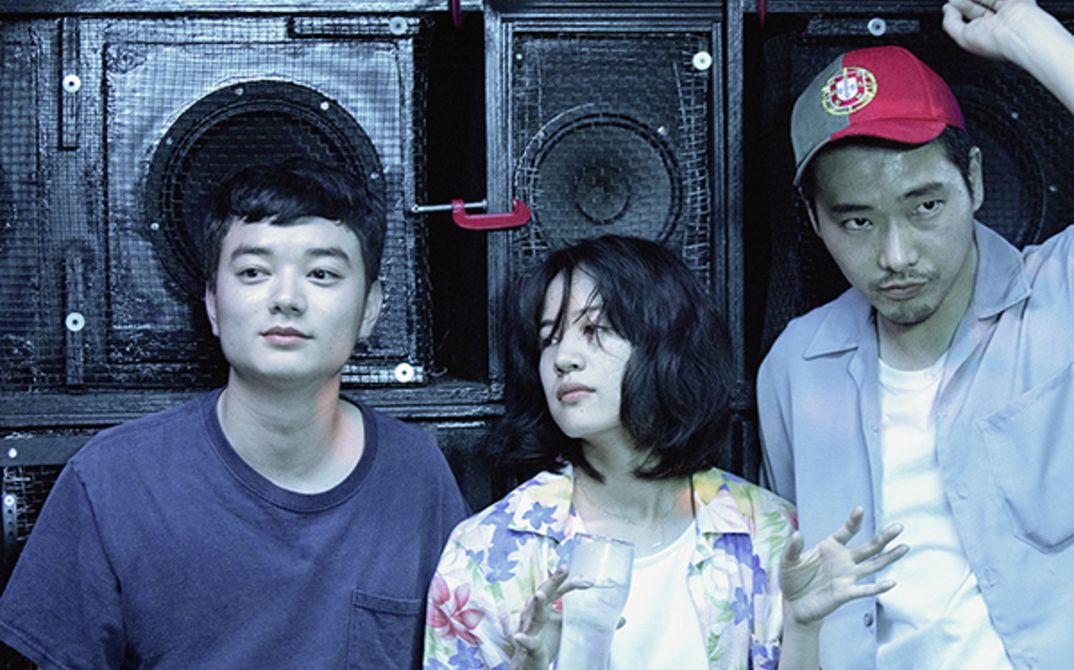Conversation with Sho Miyake: “If we had multiple lives, we would repeat ourselves”
Ansgar Vogt: With KIMI NO TORI WA UTAERU, what motivated you to adapt Yasushi Sato’s 1982 novel of the same name, which deals with the complexity of youth?
Sho Miyake: I found the depiction of the three protagonists and their relationship to one another fascinating. I sensed something timeless and universal about them. I was interested in these characters because they are at a point in their lives when they realise for the first time that they only get to live once. I believe that if we had multiple lives, we would repeat ourselves over and over and there would be neither art nor cinema.
The novel is set in a Tokyo suburb. You relocated the story to Hakodate City in Hokkaido. Are there other elements in your film that you changed from the novel?
The project was developed by a Hakodate movie theatre called Cinema Iris, and the author of the novel also comes from Hakodate. A lot of the project had already been developed by the time I was offered to take over the film’s direction. With regards to the story, I only changed the last scene: whereas in the film one of the protagonists confesses his love to another character, in the novel a murder takes place. In a movie, however, a confession of love can be more painful, dramatic and real than a murder. I also adapted some cultural details because the movie is set in a different time than the novel. For example, I changed the music the protagonists listen to and the places where they hang out, and I also adapted their pastimes to fit today’s circumstances.
You had already worked with some of the cast in your previous projects.
With Shizuka Ishibashi (Sachiko), I made two short movies and a period drama in one year. I find it interesting and exciting to make movies with her because she is not the kind of performer who neatly fits in the expected framework of a movie. Everything she does changes the movie, it creates something completely new. And I have known Shota Sometani (Shizuo) since we were teenagers. At the time, we would spend entire nights hanging out, having fun. In order to prepare for this project, I spent as much time as possible with the actors before the start of principal photography. My intention was for us to become friends just like the characters in the film.
Did you have a proper screenplay, or did you also improvise?
For the most part, we stuck to the screenplay, although there were some scenes – for example, the umbrella scene in front of the convenience store, the scene in which Boku and Shizuo steal the flower arrangement from in front of a building, or the scene in which Shizuo and Sachiko play the mouth harps – that left room for improvisation. First, I rehearsed with the actors, adding lines of dialogue if necessary. Then we had a few walkthroughs, and finally we shot those scenes. On some occasions, I also asked the actors to perform differently in each take.
Quite a few scenes are primarily shaped by their atmosphere and tonality, rather than the plot or dialogues. What was your concept in terms of capturing the right tone?
I immersed myself in the atmosphere of every location in Hakodate. I hung out with the actors, had drinks with them – just like the characters do in the movie. Behind the camera, I encouraged my crew to ‘live’ the scenes. In the dance club scene, for example, all the crew members were dancing behind the camera, from the cameraman to the lighting technicians and assistants. It was a little hard for the sound department guys because we used synch sound in that scene.
We see quite a few scenes on the streets of Hakodate City …
Hakodate is a well-known tourist destination. Many streets are full of tourists, which is why they were unsuitable for the movie. So I looked for locations only frequented by locals, as the movie is about the everyday lives of the locals.
The bookstore is one of the main locations in KIMI NO TORI WA UTAERU. Which criteria were important for you in picking that bookstore?
I had no specific criteria for choosing that bookstore. There are fewer and fewer bookstores in a small town like Hakodate and I did not have much choice. We were fortunate to find one that was just the right size. But that store has now closed as well.
What are the black-and-white photos that we see in the photo album in one scene?
They are photos of Hakodate streets from over fifty years ago. Back when Hakodate was one of Japan’s most thriving fishing ports. I can imagine that a future audience will also see my film as a record of this city in 2017.
Why did you add a voice-over in a few scenes?
The lines spoken in the voice-over are the most beautiful and memorable sentences from the novel. They seem to describe the protagonists’ emotions while at the same time making things enigmatic.
At one point Sachiko asks, ‘Do we lose our youth when we grow older?’ What would be your answer to Sachiko’s question?
The answer is: yes. I now get sleepy when I go to a club at night. I can no longer stay up all night having fun. But I hope that later in life I will reach a different type of youth, so that I do not lose it completely.
(Interview: Ansgar Vogt, January 2019)
